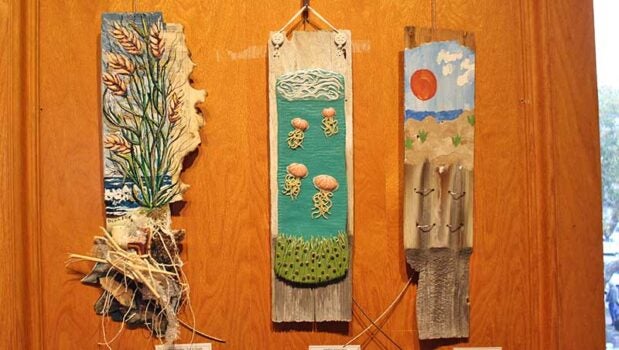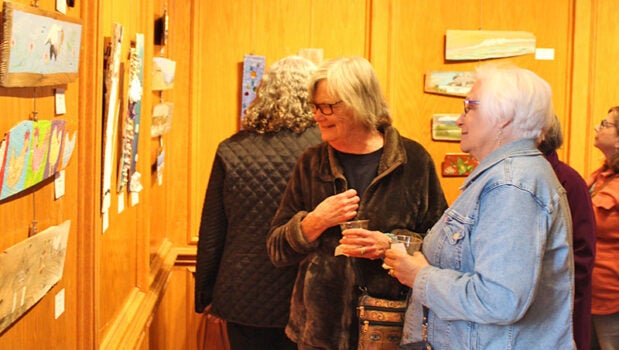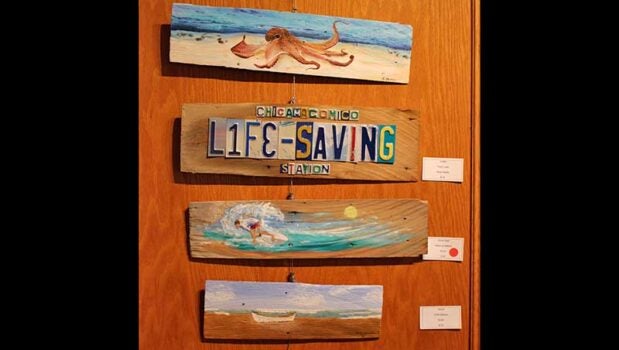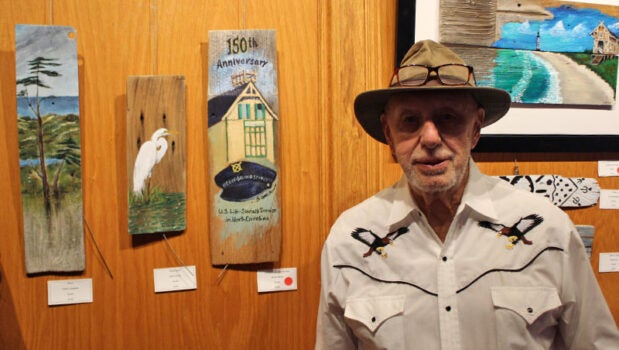Still in the rescue business: Chicamacomico Shake Exhibit opens at Dare Arts, salvaging cedar shakes from historic structure
Published 2:26 pm Monday, April 15, 2024
|
Getting your Trinity Audio player ready...
|
The Chicamacomico Shakes Exhibit opened in the Courthouse Gallery at Dare Arts on Friday evening, April 5, 2024, celebrating the 150th Anniversary of the U.S. Life-Saving Service in North Carolina through a creative display of artwork.
One hundred artists donated their talents to create 100 unique painted or decorated red cedar shakes from the cookhouse building built in 1911. Last year, the Chicamacomico Historical Association reroofed and resided the structure, salvaging any usable shakes.
The organization plans to use the funds from the shakes – which go for $150 each – to continue work on the partially funded renovation of the 1874 Life-Saving Station, which was the first of the seven stations constructed that year, said Chicamacomico Historical Association’s executive director John Griffin.
“It’s local art and local history,” said Griffin when asked why people should purchase a shake.
“People don’t realize that the Life-Saving Service, from 1874-1915 (when it became the Coast Guard, responded to 22,000 vessels. Of 178,000 lives in peril in the ocean, they rescued 177,000 people,” Griffin said.
Those rescues came out of more than 200 stations that were present in the United States in the Gulf Coast, east coast, north coast and Great Lakes by 1900.
But the very first ones were here in North Carolina because of the treacherous coast dubbed “The Graveyard of the Atlantic.” The first life-saving station completed was at Chicamacomico in Rodanthe, followed by stations in Jones Hill, Caffey’s Inlet, Kitty Hawk, Nags Head, Oregon Inlet and Little Kinnakeet.
Over the next few years, additional stations were added, totaling 29 stations located approximately six miles apart along the North Carolina/Virginia state line to the northern border of South Carolina.
The shakes are as unique as the artists who painted them. Some offer an homage to the life-saving station, while others paint beachscapes or more abstract scenes. The artists are all local from Hatteras and the northern beaches.
“We can’t guarantee it but a good guess is that they were milled across the river in Buffalo City,” Griffin said. “Before they became bootleggers in Buffalo City they ran the mill.”
The shakes will be on display and available to purchase through April 27.
SUBSCRIBE TO THE COASTLAND TIMES TODAY!










